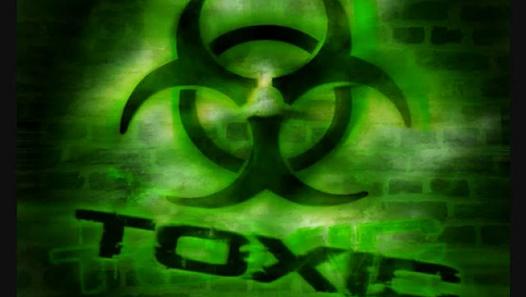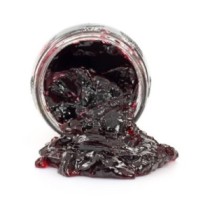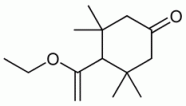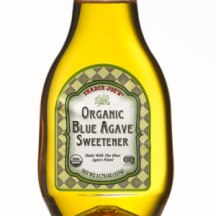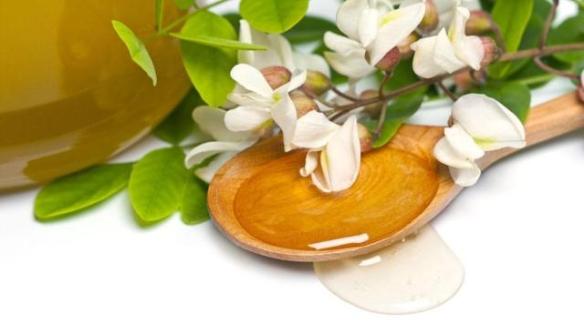You better hold onto your seats because I’m not in a good mood. In fact, I’m in a distinctly vile mood, thanks to Noble Leather, a new fragrance from YSL that was released last month in very limited distribution. Ignoble Noble Leather is one of three scents in the new Oriental Collection that is meant to honour the brilliant Yves St. Laurent himself.
All I have to say to that is that the poor man would cry in his grave if he smelled this fragrance. He happens to have been a personal idol of mine, a man I practically worshiped in my youth, and whose creations were once a huge part of my life in numerous different ways. He would cry at the toxic horror that is Noble Leather, and I would join him — if I didn’t feel like taking a sword and stabbing it through L’Oreal‘s heart.
The most common, frequent description of Noble Leather lies through its teeth when it states:
Yves Saint Laurent has drawn its inspiration from the splendours of the East to give birth to an exceptional collection. In honour of its creator and his never-ending passion for the elsewhere, the Oriental Collection celebrates the mysteries and refinement of a land of infinite richness. The potent and deep scent of leather fervently states its case and whispers an elegant, raw and carnal sensuality. The ambery wood accord embraces languid vanilla and the earthy scents of patchouli before giving way to intermingling tanned leathers. Enhanced by a dash of bright saffron notes and softened by the candied sweetness of the dried fruit accord, this skin-deep fragrance leaves an unforgettable impression.
The most complete and detailed information I found for the fragrance comes from Ozmoz. It states that Noble Leather was created by Julie Massé of Mane, and it provides both a description of the bottle and the full list of notes:
Sensual and animalic, Noble Leather is a fragrance in Yves Saint Laurent’s Oriental Collection line. Inspired by the mysteries of the Orient, the collection is an invitation to travel. Noble Leather is composed around a leather accord that’s sweetened with dried-fruit notes. The cubic bottle is sheathed in gold and nestles in a golden box inspired by an Oriental palace. Available from selected points of sale only.
Top : Violet Blossom, Saffron, Tangerine
Heart : Tobacco, Leather, Dried Fruit
Base : Vanilla, Patchouli
A pack of lies, if you ask me. Nothing in this fragrance “celebrates the mysteries and refinement of a land of infinite richness.” What it celebrates are laboratory concoctions. An invitation to travel? Where? To see the scientists at work in the bowels of Givaudan creating vats of cheap Norlimbanol, the ISO E-like Kephalis, cheap purple fruit-chouli, and Safraleine? As for the Orient, bah! It would join Mr. St. Laurent in weeping copious tears of shame that its name has been linked to this over-priced, outrageous hot mess. At least one of them should sue for defamation.
And L’Oreal, you should be utterly ashamed at what you’ve done to the Yves St. Laurent name, a name that was once highly respected, and my own personal favorite amidst all the perfume houses. For shame. FOR SHAME, you revolting, mercenary creatures. Stop picking at the Yves St. Laurent carcass, like the maggoty, mangy, flea-ridden vultures that you are. Haven’t you done enough with the emasculated eunuch and abomination that is the current Opium?
I suppose I should get to what this vile horror smells like, but I’ve been trying to put off revisiting the memory from sheer misery. Well, Noble Leather opens like a toxic cloud of chemical napalm on my skin. There is a momentary pop of saffron, rich rose, and then a powerful, unexpected burst of an oud-y woodiness, followed by a tidal wave of synthetics. That artificial “oud” is highly peppered and dry, to the point that it feels prickly, spiky, and almost sulphurous. It actually doesn’t smell like the real wood, but my brain is clearly making the connections between the chemicals that often accompany agarwood in fragrances like Montale’s Aouds, and interpreting it as “oud.” Only here, it smells like a really bad, cheap version of Montale’s “oud” — which says something….
In these opening minutes, it is genuinely difficult for me to detect much in Noble Leather behind the deluge of chemicals that are, alternatively, profoundly peppered, aggressively sharp, sulphurously smoky, prickly, and syrupy sweet. My nose is pounding from some sort of piercing dryness, while a sudden pain shoots behind my left eye. But, eh, I’m generally used to such things when there is a gallon of synthetics involved, no matter how miserable the experience. What I’m significantly less used to is the feeling that someone has taken the edge of a sharp kitchen knife and scraped it all along the back of my throat. It feels raw, scratchy, and then it starts to burn. What the hell is in this bloody perfume?!
It is a rhetorical question because I actually recall the unpleasant medley of toxic chemical smells from a prior experience, though it had been faint in comparison then and it never — ever — triggered a reaction like this. This smell that is almost like ISO E Super, but not quite; this olfactory cocktail that begins with a slightly astringent (and quite oud-like) note, before quickly radiating a spiky, smoked, highly peppered cedary dryness, with amber and the vaguest undertone of leather — this medley feels extremely familiar.
Early this summer, I came across a discussion about the synthetic aromachemicals, Kephalis and Norlimbanol on the blog, Scent Intoxique. I am forever indebted to Duke Hunt whose invaluable description taught me to recognize the cocktail of synthetics that I detect here (only Noble Leather has them amped up on steroids, if you ask me). In his review for Nasomatto’s Black Afgano, Duke Hunt wrote:
Straight out of the bong you’re greeted with a dense aroma chemical sucker punch made up of synthetic Givaudan oud, coupled with an underpinned cedar effect in the form of Kephalis (which is an Iso-E-Super substitute, only with a more woodier/smokier feel).
Finally I can make out some quite prominent vetiver/tobacco notes, adding to the “greenness” which the general nose picks up. I may be off, but I definitely feel like I’m picking up one of the main players here and that’s Norlimbanol™, which is described as an “extremely powerful woody/animal amber note. That has a dry woody note in the patchouli direction”.
As described by Chandler Burr, “Norlimbanol is one of the most amazing scents around, a genius molecule that should be worth its weight in gold; Norlimbanol gives you, quite simply, the smell of extreme dryness, absolute desiccation, and if when you smell it, you’ll understand that instantly—the molecule is, by itself, a multi-sensory Disney ride.”
It’s this same compound which I believe gives the scent its subtle leathery undertones along with the amber. [Emphasis in font to the names added by me.]
Almost everything he’s written — not everything, but almost all — I detect here. From “the subtle leathery tones along with the amber,” to the spiky, peppered, almost greenish notes that resemble smoked cedar, to acutely dry, astringent, almost sulphurously burning woody-amber notes. The patchouli he mentions, well, that is provided in additional form with the actual note, as is the supposed tobacco (which is probably just more Kephalis in disguise). And the whole, utterly heinous, indescribable abomination is wrapped up with an ISO E Super-like bow that explodes at you right out of the starting gates. I sharply and vehemently disagree with Chandler Burr that this is genius gold.
To me, Noble Leather’s toxic brew is a chemical hell on earth that is the perfume equivalent of napalm. Each and every time I sniff I my arm, the back of my throat burns, and I get a spasmodic pain behind my eye. I have smelled a lot of ISO E or synthetic fragrances, and, while I may hate the aroma, I don’t get physical reactions unless the quantity of aroma-chemicals is really enormous. And I certainly can’t recall the last time I had a physical reaction that was this strong.
Minutes after the traumatizing tsunami of toxicity that is unleashed on me, more notes arrive on the scene. There is a jammy patchouli that evokes the aroma of syrupy red roses dominated by dark fruits, then small bubbles of a sweet tangerine and a powdery violet. At first, the citric element is a bit juicy and tart, but it soon takes on a plastic synthetic profile. You know those cheap “Made in China” plastic toys? Well, imagine the smell of one of those just barely infused with something orange-like. As for the violet, it’s delicate, but also somewhat woody and is quickly transformed with a peppery bite from the other accords. Much more prominent to me is a note that distinctly smells like jammy roses, even though there is none listed in the perfume. I assuming it’s my mind making those connections again, as fruited purple patchouli often accompanies a rose accord in perfumery. Whatever the reason, there is a fruited floralness in Noble Leather that goes beyond mere “violets” and which I’ll just call “rose” from this point onwards.
Then, there is the saffron. It starts off being a little fiery and spiced, but soon takes on a warm, almost leathery bent. It is most definitely Safraleine, a Givaudan creation that the company describes as follows:
Safraleine has a very unique warm and vibrant character offering a new alternative to existing spicy odorants. Safraleine exhibits warm, powerful, leathery and tobacco facets but its complexity also reveals characteristics of spices reminiscent of natural saffron, enriched by rose ketone-like floral aspects.
The shrieking madness finally starts to abate about 10 minutes into Ignoble Leather’s development. Now, it’s only a moderately aggressive chemical bath of violet, jammy fruited patchouli, plastic orange, fake oud-y woodiness, and highly peppered, ISO E-like sharpness. For the first time, the tobacco and leather appear on the scene. The former is dusty, dry, and smells a bit like a stale, unlit cigar. The latter smells like suede infused with cheap, pleather vinyl. Yet, neither one feels distinctive or much like the notes in their own right.
The best way to explain it is that the tobacco doesn’t smell like the actual tobacco found in other fragrances focusing on the note. It smells like an abstract approximation of what “tobacco” is supposed to smell like. My guess is that there is no actual tobacco in Noble Leather but that the aroma has been artificially created by Kephalis, that cousin to ISO E Super. Duke Hunt talked about Kephalis in the section I quoted above, but Givaudan‘s description of the synthetic is useful:
Kephalis is a very versatile and rich product, used as a long lasting heart/basic note. It blends well with floral notes (jasmine, rose, violet, lavender, etc.) as well as sophisticated amber, woody-aldehydic, tobacco and masculine creations.
Thirty minutes in, the balance of power in the perfume starts to shift. As the super-shrill astringent, sulphurous, dusty and dry woody synthetics abate (a little), there is a matching rise in the fruited patchouli. It becomes heavier, more prominent, and suddenly, Noble Leather feels even sweeter. The most positive thing that I can say about the whole ghastly concoction is that the violet is pretty. Oddly enough, the peppered ISO E-like note seems to give the sometimes wan, frail note a little oomph. As a whole, though, the violets are never a significant part of Noble Leather on my skin. How could something so delicate withstand the power of a super synthetic like Norlimbanol?

“Rose Reflections” by HocusFocusClick on Flickr. (Click on photo for website link which is embedded within).
At the end of the first hour, Noble Leather is a slightly softer mess of sharp, dusty, woody dryness with spiky, peppered ISO E-like notes, a syrupy pink rose, sticky fruits, cheap vinyl-smelling leather, hints of violets, stale tobacco, and synthetic, buttered saffron. It starts to devolve, with the fruited patchouli becoming more prominent, the fragrance taking on an amber undertone, and the woody notes turning more abstract.
In the middle of the second hour, Noble Leather feels more and more like a vaguely floral patchouli with fruited molasses, amber, and ISO E, over a base of extremely dry woodiness that, at best, resembles a sharp cedar. The vague abstraction of cheap leather retreats to the sidelines. The whole thing is much softer and, though I’m not keen on patchouli rose, Noble Leather smells better. It is almost pleasant — albeit on the most relative of absolute scales fabricated in the bowels of Hell. Perhaps it’s the relief talking, as Noble Leather’s soft cloud is now radiating only 3 inches off my skin, instead of punching me in the head like Mike Tyson.
Regardless of what the notes may say, Ignoble Leather has a definite underpinning of amber. I suspect it stems from some combination of the synthetics together. Whatever the precise reason, by the middle of the second hour, Noble Leather smells of a soft, “oud”-y rose with fruited patchouli, dusty saffron, dusty and stale tobacco, dry cedar-ish woods, and Norlimbanol amber. The perfume’s sillage drops, but the notes are still forceful when smelled up close. In fact, each and every time I sniff my arm, it feels like someone has taken an old-fashioned 18th-century straight razor to the back of my throat.
At the end of the fourth hour, Noble Leather is a woody, dry amber fragrance with tobacco, saffron, and that patchouli rose. There is the vaguest hint of suede that pops up every now and then, but leather? Elvis left the building a while ago. Taking his place is a subtle, very dry vanilla that starts to rise to the surface. Noble Leather turns increasingly abstract and hazy, and its final moments consists primarily of an amber with indistinct, super dry woodiness and vanilla, atop an amorphous, slightly fruited sweetness. All in all, the bloody perfume lasted just over 9 hours on my perfume-consuming skin with sillage that was initially fierce, then strong, before it turned soft about 2.5 hours into Noble Leather’s development. As you might have gathered by now, I was not a fan. Of any of it.
In fact, I wasn’t a fan even in my first encounter with the perfume. I actually smelled Noble Leather while I was in Paris. It was on a paper mouillette, but I was taken aback even then by the sharp wave of horrors that came at me. I didn’t know Noble Leather’s official notes, but I recall telling the sales assistant that I smelled oud, and asked if it had ISO E Super. When she stared at me blankly, I wrapped things up by simply saying that I was tired of safraleine-oud-rose fragrances. I could smell much of it, even back then from mere paper. But on actual skin…. it’s a whole other matter entirely.
On Fragrantica, the main focus of people’s discussion of Noble Leather is Tom Ford‘s Tuscan Leather. I took out my sample of the latter today to give it a cursory comparative test, and the two scents are simultaneously extremely alike and nothing alike. Yes, the perfumes have an extremely close olfactory bouquet but, at no time, does the Tom Ford fragrance hit you with a tsunami of toxicity. There are definitely traces of Norlimbanol in Tuscan Leather, and it has an incredibly dry, peppered base, but the relative degrees are night and day apart. On a scale of 1 to 10, with 10 being the highest, the amount of synthetics used in Noble Leather would rate a solid 10 in the opening minutes. Tom Ford’s would rate a 1.5, which rises to about a 2 or 2.5 as the Norlimbanol starts to stir and become more prominent. For what it’s worth, Tuscan Leather triggered some scratchiness in my throat as well, so I’m clearly sensitive to that particular aroma-chemical in ways that I am not even to ISO E Super. But it is more like minor irritation, a small cough, as opposed to feeling that my skin has been scraped raw by a straight razor.
I realize that the degree of my fury may seem quite disproportionate to the situation at large. I am sure many of you think that the perfume can’t possibly be that unpleasant, and that my nose is simply much more sensitive than the average person. I concede that last point. I always had an acutely sensitive nose but, the more I sniff perfumes daily, the more sensitive it becomes, since, in essence, the nose is merely another type of muscle. Exercising it daily makes it much stronger. But, in my opinion, Noble Leather really is that bad. For all that people think it’s a clone of Tuscan Leather, the latter is an infinitely better, smoother, more well-rounded, high-quality, expensive-smelling fragrance. It lacks Noble Leather’s sharp, bony, spiky elbows and prickly roughness. Noble Leather amps up the chemicals to a shocking degree; it’s vats of the stuff, instead of a few table spoons.
One of the reasons why I’m so angry is the cost of Noble Leather. YSL is charging £185 or €177 for an 80 ml bottle. At the current rate of conversion, £185 is $301. That is completely outrageous given the ingredients used in the fragrance. Yes, real saffron is bloody expensive, and a lot of perfume companies use Safranal or Safraleine instead. But the ISO E-like tobacco, Kephalis? Norlimbanol? I can go out right this minute and buy 4 ml of Norlimbanol in undiluted concentrate from The Perfumer’s Apprentice for $3.99, or a large 80 ml bottle (the same sized bottle as Noble Leather) for $36. I can buy 80 ml of Kephalis for $18. Given that L’Oreal undoubtedly gets a massive discount for wholesale orders of the stuff, the cost to them would be even lower. Plus, since all this stuff is subsequently diluted in an perfumer’s alcohol base, 80 ml of either chemical could probably make several hundred bottles of perfume.
That makes Noble Leather’s $300 price tag simply insulting. Sheer venal greed for a totally crap, cheaply made, chemical perfume that is a tsunami of toxicity. Yves St. Laurent was the epitome of elegance, luxury, seductiveness, and opulent orientalism. This “homage” to him is an utter abomination. I can’t even bear to talk about it any more.




